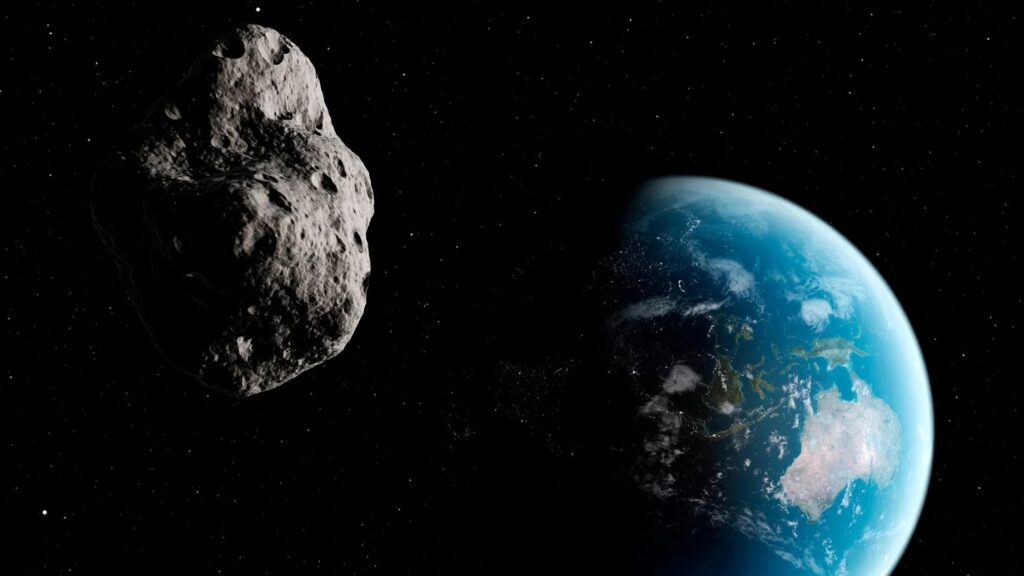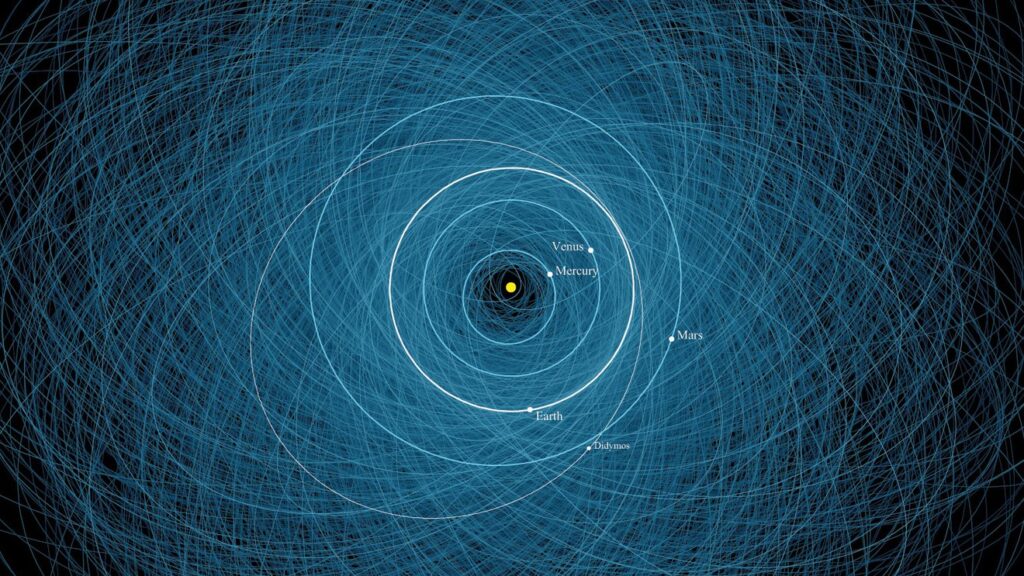A team of American scientists has created a map of potentially dangerous asteroids with a diameter of more than a kilometer. They managed to detect 28 objects that would approach our planet at a distance less than the distance to the Moon.

At the moment, astronomers have discovered almost all near-Earth asteroids with a diameter of more than one kilometer. The fall of such an object to the Earth will lead to severe consequences ranging from the devastation of an entire continent to the death of the entire human civilization.
The good news is that none of these asteroids will collide with our planet in the next hundred years. The bad news is that under the influence of gravitational perturbations, asteroids often change their orbits. And this means that the initially non-threatening rock may eventually end up on a trajectory intersecting with the Earth’s orbit.
To find an answer to the question of how the orbits of large near-Earth asteroids can change, astronomers have resorted to the help of computer modeling. They created a series of simulations, studying as many possible trajectories as possible, taking into account the uncertainties in the available data on their orbital characteristics.
Earth-threatening asteroids
The study made it possible to identify 28 asteroids with a non-zero probability of a close approach within the next thousand years. This means that they will approach our planet at a distance less than the distance to the Moon. Although none of these approaches carries a risk of collision, astronomers believe that these asteroids should be objects of close attention in case their orbits change in the future.

Astronomers have also singled out asteroid 7482 as particularly dangerous. This rock will spend a significant amount of time near Earth over the next millennium. This does not mean that it will necessarily collide with our planet. But the probability of a collision with it in the next thousand years is the highest.
The researchers also have identified another asteroid, asteroid 143651, which has such a chaotic orbit that it makes it impossible to predict its exact position in an interval exceeding several decades. Thus, astronomers simply cannot assess its danger in the long term.
Also, do not forget that the study covers only near-Earth asteroids with a diameter of more than a kilometer. There are a much larger number of small objects in the Solar System, which can also cause great destruction when falling to Earth. At the same time, not all of them have been found by astronomers. Therefore, NASA and ESA plan to launch the NEO Surveyor and NEOMIR space telescopes in the coming years, which will search for the missing part of the near-Earth asteroid population.
According to https://www.universetoday.com
Follow us on Twitter to get the most interesting space news in time
https://twitter.com/ust_magazine

